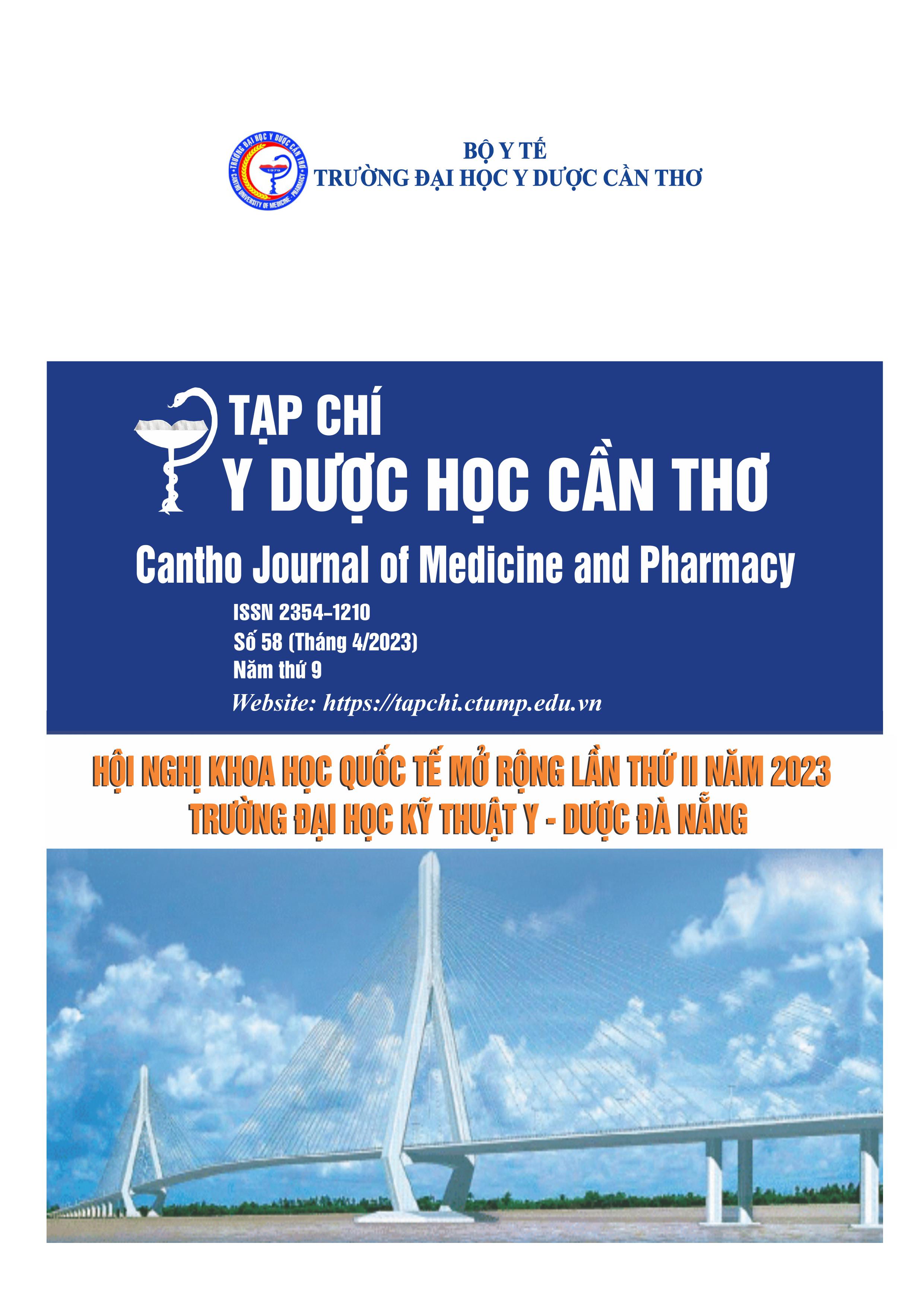YẾU TỐ NGUY CƠ CỦA LOẠN SẢN PHẾ QUẢN PHỔI Ở TRẺ SƠ SINH RẤT NON THÁNG
Nội dung chính của bài viết
Tóm tắt
Đặt vấn đề: Loạn sản phế quản phổi là biến chứng thường gặp ở trẻ sơ sinh non tháng. Mục tiêu nghiên cứu: Xác định một số yếu tố nguy cơ của loạn sản phế quản phổi ở trẻ sơ sinh rất non tháng. Đối tượng và phương pháp nghiên cứu: Nghiên cứu mô tả cắt ngang trên 170 trẻ sơ sinh tuổi thai dưới 32 tuần điều trị tại bệnh viện Phụ sản-Nhi Đà Nẵng từ ngày 01 tháng 02 năm 2019 đến ngày 31 tháng 1 năm 2020. Tiền sử mẹ, đặc điểm và các bệnh lý của con được thu thập; phân tích đa biến được dùng để xác định các yếu tố nguy cơ độc lập của loạn sản phế quản phổi. Kết quả: 54/170 (31,8%) trẻ sơ sinh tuổi thai dưới 32 tuần mắc loạn sản phế quản phổi. Tuổi thai <28 tuần (OR 7,85; 95% CI 3,50-17,75), cân nặng lúc sinh <1000g (OR 5,17; 95%CI 2,37-11,31), sinh thường (OR 2,99; 95%CI 1,31-7,31), thiếu máu nặng (OR 33,14; 95%CI 7,92-288,97), nhiễm trùng máu (OR 51,20; 95%CI 8,08-2095,04), xuất huyết trong não thất (OR 4,03; 95%CI 1,918,66), chậm tăng cân (OR 2,94; 95%CI 1,34-6,76) và còn ống động mạch có triệu chứng (OR 11,54; 95%CI 5,03-27,24) có liên quan đến loạn sản phế quản phổi (p<0,05). Khi phân tích đa biến, chỉ có còn ống động mạch có triệu chứng là yếu tố nguy cơ độc lập duy nhất (OR 3,40; 95%CI 1,32- 8,73) (p<0,05). Kết luận: Tỉ lệ mắc loạn sản phế quản phổi còn cao, còn ống động mạch làm tăng nguy cơ mắc loạn sản phế quản phổi ở trẻ sơ sinh rất non tháng.
Chi tiết bài viết
Từ khóa
Loạn sản phế quản phổi, sơ sinh rất non tháng, yếu tố nguy cơ
Tài liệu tham khảo
2. Collins, J.J.P., et al., (2017), The Future of Bronchopulmonary Dysplasia: Emerging Pathophysiological Concepts and Potential New Avenues of Treatment, Front Med (Lausanne), 4, pp. 61.
3. Gortner, L., et al. (2011), Rates of Bronchopulmonary Dysplasia in Very Preterm Neonates in Europe: Results from the MOSAIC Cohort, Neonatology, 2011. 99(2): pp. 112-117.
4. Jiangsu Multicenter Study Collaborative Group for Breastmilk Feeding in Neonatal Intensive Care Units (2019), Clinical characteristics and risk factors of very low birth weight and extremely low birth weight infants with bronchopulmonary dysplasia: multicenter retrospective analysis, Chin J Pediatr, 57(1), pp. 33-39. doi.org/10.3760/cma.j.issn.0578-1310.2019.01.009
5. Kalikkot Thekkeveedu, R., M.C. Guaman, and B. Shivanna (2017), Bronchopulmonary dysplasia: A review of pathogenesis and pathophysiology, Respir Med, 132, pp. 170-177.
6. Kiciński, P., et al., (2017), Bronchopulmonary dysplasia in very and extremely low birth weight infants - analysis of selected risk factors, Pol Merkur Lekarski, 42(248), pp. 71-75.
7. Li, W.L., et al., (2018), Clinical features and prognosis of preterm infants with varying degrees of bronchopulmonary dysplasia, Chin J Pediatr, 20(4), pp. 261-266.
8. Morrow, L.A., et al., (2017), Antenatal Determinants of Bronchopulmonary Dysplasia and Late Respiratory Disease in Preterm Infants, Am J Respir Crit Care Med, 196(3), pp. 364-374.
9. Sucasas Alonso, A., et al., Epidemiology and risk factors for bronchopulmonary dysplasia in preterm infants born at or less than 32 weeks of gestation, An Pediatr (Engl Ed), 2022. 96(3): p. 242-251.
10. Um-Bergström, P., et al., (2017), Lung function development after preterm birth in relation to severity of Bronchopulmonary dysplasia, BMC Pulm Med, 17(1), pp. 97.


